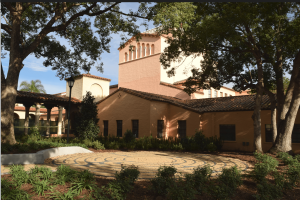Rollins’ tuition is set to increase by over $2,000 in the 2020-2021 term. Students who came to Rollins expecting to pay one price are now expected to have to change what they pay. This should not be the case, especially considering the current problem of diminishing financial aid.
Rollins has been nicknamed the “Harvard of the South,” and when comparing tuition costs, it makes sense why someone would believe that. However, there is an important distinction between Harvard and Rollins: Harvard recognizes that the liberal arts education that Rollins claims to specialize in is for everyone, not just for those who can afford it, and it financially supports all incoming students as much as they need.
Rollins’ tuition increase should not have to be the reality for current students who chose to attend Rollins under one set of circumstances, which they had no reason to believe would change.
While $2,000 may not seem like a lot, for students putting everything they have into attending this institution, $2,000 can be the difference between staying and transferring. This disproportionately affects low-income students and pushes the college toward a future where the student body seems anything but diverse.
After I was accepted to Rollins and offered scholarship money from it and the state, the price of attending remained high, as it does for most students. For others, they earned and saved up enough money to just barely afford to attend.
All students chose to come here for the same reason: because we believed in the future that a Rollins education promised. This tuition increase has jeopardized that future and made us question if the college truly cares about the fate of the entire student body, one which they say is best served by expanding diversity.
That was the allure of Rollins; as high school students, we were promised an unparalleled liberal arts education that would expand our worldview and prepare us for a globalizing world.
Despite clearly diminishing support from the state, the college decides to raise tuition, asking us to pay more for this broken system. This shows another contradiction between the school’s mission and its current actions:
The EASE Grant offered to Florida students is on the cusp of being discontinued, and the Florida Bright Futures Scholarship (which many students rely on) cuts off student aid after students meet a certain number of credit hours.
Therefore, it seems ironic that Rollins’ mission relies on students pushing themselves in as many opportunities and classes as they can handle— while the state punishes us for doing just that.
Instead of complicating the situation further, Rollins should be exploring ways to help mitigate the problem of financial aid disparities and better affirm their mission to all students.
For example, Purdue University President Mitch Daniels has chosen to freeze tuition for the last seven years, a stance which the Rollins Student Government Association also recently supported with the passage of the Fair Tuition Act.
Rising prices are a natural part of how our society works. No one could fault a college for raising the tuition for incoming classes or for making the appeal to the current student body for why such action would be deemed necessary.
However, we as students have yet to be granted a seat at the table where these decisions about our financial futures are being made.
For a school whose motto is “let there be light,” a great deal still seems to be left in the dark. Students are left to stumble blindly for answers and to force a response from the administration regarding why the tuition will be increasing.
This is not to say that members of the college’s administration are our enemies. This administration was there to cover the loss in funding when the value of the EASE Grant first decreased, and figures such as Vice President of Student Affairs Megan Harte-Weyant have made it a point to express their willingness and readiness to help our efforts to create financial transparency and fair tuition at the college.
However, there remains a distinct disconnect between Rollins’ decision-making process and us, the students, who bear the repercussions, leaving us feeling disrespected and blindsided by these changes.
I love Rollins and would not want to be receiving my education anywhere else, but it must do more than just speak the part of a dedicated school. It must show the student body through its actions that it values our potential to society more than it does our potential to pay higher tuition.
The opinions on this page do not necessarily reflect those of The Sandspur or Rollins College.




















Comments are closed.